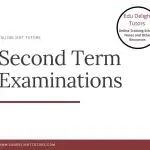Subject :
Topic :THE URHOBO
Class :
Primary / Basic
Term :
Term
Week :
Week 7
Instructional Materials :
- THE URHOBO
Previous Knowledge :
The pupils have been taught
Behavioural Objectives : At the end of the lesson, the pupils should be able to
Content :
THE URHOBO
THE URHOBO
The urhobo speaking people of Nigeria can be found in the present delta state of Nigeria ,stories about their origin have been linked to the ijo-speaking people of Niger delta in which five clans were identified,
The first, UGHELLI clan which was said to have been founded by one ogele,two of his brothers namely; ogo and Agbarha later founded settlements named after them ,The above three settlements of ughelli,ogo and Agbarha became the owha clan,
other clans such as ughienvwe and Ewu were founded by both ughienvwe and ogobiri ,these two bothers were said to have left ogobiri after a misunderstanding with their kinsmen,they moved through the creeks towards bomadi where they settled moved through the creeks towards bomadi where they settled for a while before they later established ughienvwe and ewu clans.
another tradition of origin identified benin as their ancestor,this traditionwhich claimed that a benin man was the father of uwherun with his two brothers who were the first to sttle in eastern part of niger delta,from here uwherun moved to established a settlement called urhobo clan,
furthermore,other cans such as the urhobo clan of effurun [ uvwie] founded by a mixed group,Evhro-oto founded by a GROUP of migrants from Agbon that traced heir origin to benin,
POLITICAL AND SOCIAL STRUCTURES OF THE URHOBO
1]Like the igbo,the political and social structures of the urhobo were based on the structure of the village in which the compound was the smallest units,for examples,the father was the head of the compound who was responsible for the maintenance of law and order as well as the promotion of the welfare of each family,
2]There were clans which exercised authority of ovie among the urhobo
Presentation
The topic is presented step by step
Step 1:
The class teacher revises the previous topics
Step 2.
He introduces the new topic
Step 3:
The class teacher allows the pupils to give their own examples and he corrects them when the needs arise
CLASSWORK;;
1]mention the various clans from which the urhobo traced their origin
2]lists the various activities of the age-grades among urhobo
ASSIGNMENT
Narrate the history of the IJAW [ IJO]
::





